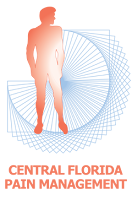Why do some people feel pain differently?
PAIN
Pain is an act of believe. No one will ever know the truth,
all we can do is believe in you when you say I am in pain. We cannot see pain, we
cannot measure pain, we only know about pain itself because of our own experiences with
it. How we feel pain, how strong it is for us, how much we can
take of it, are all unique characteristics specific to each person.
Pain perception is not just mediated by injury or potential
damage. It is very influenced by genetics, social and emotional factors. The
reason why we use a 0 to 10 scale to judge pain is because a pain level of a 5 for myself might only be a 2 for you, or
a 9 for someone else.
GENETICS
What we would call protoplasm, some people appear to
tolerate pain more than others and vice versa. Two siblings with same injury will feel different intensity of pain.
UPBRINGING
Some children raised in very protective environment versus
very stoic will react and behave differently towards their pain.
EMOTIONS
We all experience headaches and we don’t make much of one,
BUT a common headache becomes overbearing for a patient with a brain tumor
because a simple headache will be linked to the tumor by the patient.
We are all so different.

Cesar A. Euribe, MD






